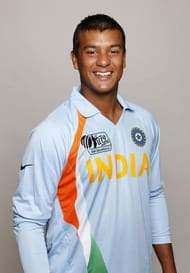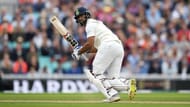India has decided to go in with the same squad in the second Test that demolished the West Indies for its biggest victory within a mere three days. One would have thought that the Indian think-tank would consider giving an opportunity in this Test to players who could be required to play crucial roles in the much tougher Australian tour later this year. But apparently, that’s not how those in charge of Indian cricket think.
A first sign of India retaining the same squad came a few days ago when Bharat Arun, the Indian bowling coach, talked about how they are not interested in experimenting too much with the combination of the squad and how winning was the primary focus. The selection of the squad is a confirmation of that line of thinking.
But what does India get to gain more from this Test than winning it, which they would have anyway done by going in with a squad that would given some opportunity to players who are just on the fringes of the playing XI? Surely, they were not scared that the ‘weakened’ side may lose to this West Indian side.
Of course, the presence of big names like Virat Kohli, Mohammed Shami and Cheteswar Pujara would ensure that the broadcasters are happy – the recent ugly drama surrounding the non-inclusion of Virat Kohli in the Asia Cup is very much fresh in the minds of cricket lovers. Sure, Virat has a chance of notching up yet another century, that will keep the statistic-driven Indian cricket fans happy. Pujara may very well notch up another big score as well.

However, in the place of these two mainstays of Indian Test batting, they could have very well decided to go in with Mayank Agarwal and Hanuma Vihari, keeping the immediate future of the upcoming Australian tour and the overseas tours after that in mind. By selecting three opening batsmen in the larger squad, the selectors seem to have made up their mind that they are going to choose their opening combination from Prithvi Shaw, KL Rahul and Mayank Agarwal. In such a scenario, it would have made a lot of sense to give Mayank some exposure of Test cricket, before embarking on the Australian tour, as this happens to be the last Test match before that tour.
Imagine a scenario where Rahul fails again in this Test. He has been extremely inconsistent for a top order batsman in Test cricket in the last dozen or so innings, with only about two good scores and a string of failures. His difficulty against fast incoming balls is no secret now, and even the West Indian attack was able to exploit that weakness on docile Indian conditions.
If he fails in this Test too, would the Indian team still be obstinate and go ahead with him as one of the opening batsmen during the Australian tour? And even if he succeeds, that does not mean one should not have a back-up option who could replace him at the top if his technical problems and inconsistencies surface during the long and arduous Australian tour.
That back-up option is Mayank Agarwal. And it would have helped not just him in gaining some exposure in Test cricket, but would have helped India’s cause as well.

Another major implication that can be drawn from this squad is that the Indian think-tank seems to be rigid in their policy of playing five bowlers in the playing XI. It’s good to be aggressive and phrases like “playing to win” are great sound bites coming from the captain or the coach. But when your aggression is not backed up by results, especially in overseas conditions as was seen in the England tour, there should not be any shame in having a plan B – that of a safety first approach, and going in with six batsmen.
Preferably someone at number six position who is a proper batsman, and not an ‘all-rounder’ who is technically unequipped to succeed at the highest level consistently. Hanuma Vihari can surely be trusted to perform that role for India, when needed. He showcased great technique and temperament in his debut Test in England. He is someone who can also be asked to roll his arms over to give respite to the four frontline bowlers. The fact that in overseas conditions when India may mostly go with just one spinner in the playing eleven, if the surface offers unexpected help to a spinner, he could be an able second spinner. His bowling in his only Test wasn’t that shabby either.
Thus, by not giving opportunities to players like Mayank Agarwal and Hanuma Vihari, India has surely lost a golden opportunity in their preparation for the Australian tour. They could have even handed a debut to the in-form Mohammed Siraj on his home ground. In any case, now that they have preferred a misplaced idea of ‘consistency’ over giving chances to some players with an eye on future (that too a future, that is just looming over the horizon), one just hopes that it is not an indication of their inflexibility when it comes to deciding on team selections or even choosing to play with six batsmen, when required.
